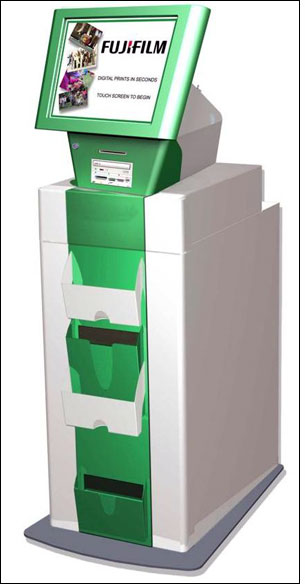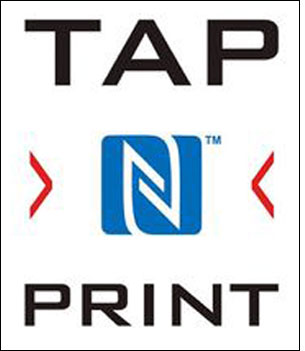Jun 27, 2012Photography equipment and services provider Fujifilm UK is testing a Near Field Communication (NFC)-based solution to pair mobile phones with kiosks during Bluetooth transmissions, thereby enabling consumers to print or order pictures stored on their mobile phones, simply by tapping the phone and selecting which items to order or print. The system, dubbed Tap N Print, makes it easier to upload photos via a phone's Bluetooth functionality. Normally, to print pictures, a user has first needed to establish a Bluetooth connection by pressing buttons on the phone, in order to pair it with the kiosk for each photo to be printed. But for anyone using one of approximately 150 trial RFID-enabled Fujifilm kiosks, it is a matter of simply selecting pictures, and then transmitting them all at once to the kiosk for printing or other services, after tapping an NFC RFID tag on the kiosk.
The trial was launched at 22 stores, with the first installations taking place last month. Once the kiosks (which have Smartrac BullsEye RFID tags attached to them) have all been in service for four months, Fujifilm UK plans to evaluate the results. According to Julia Tiller, Fujifilm UK's product support manager of software and systems, the company has already noticed an uptick in Bluetooth-based transactions at the Tap N Print NFC-enabled kiosks—indicating, perhaps, that the NFC functionality is making Bluetooth easier to use.
More than 3,500 Fujifilm kiosks are installed at a variety of stores across Great Britain, including at several small independent stores and large chain retailers. The kiosks, employing an operating system known as "SmartPix," let a consumer print pictures, burn a CD or order a book, mug, shoulder bag or other product with that person's photos printed on it. The kiosk can download images stored on a digital camera, disk or thumb drive. However, consumers are increasingly utilizing the cameras built into their mobile phones to shoot photographs. In that case, a customer would need to transfer the images directly from the phone to the kiosk, which is typically accomplished via a Bluetooth connection.
To conduct a Bluetooth transaction, the user would typically place the phone within range of the kiosk, follow instructions to pair the phone with the kiosk, and select an image to send the photographs. If using another kiosk, the customer must again pair his phone with that kiosk. If printing multiple pictures simultaneously, he must follow instructions to pair and then send each individual photo.
A user of the NFC system would first download the Fujifilm Tap N Print phone application from an app market, or from Fujifilm UK's Tap N Print Web site, then tap the phone near the Tap N Print logo printed on a label attached to the edge of the kiosk's screen. Embedded beneath the logo is a Smartrac BullsEye 13.56 MHz passive RFID tag, and the phone's NFC-enabled reader captures the tag's ID number, enabling the automatic Bluetooth pairing between the kiosk and phone. The consumer would then utilize the Tap N Print app to select pictures to print or incorporate into other products. Once the user presses "send," the pictures are uploaded via Bluetooth to the kiosk, and are then displayed on the kiosk screen. At this point, the individual can opt either to edit the pictures or to order specific quantities, and then complete and pay for the transaction.
"NFC is making the pairing between the phone and kiosk more convenient and faster," says Ivan Plajh, Smartrac's head of business line mobile and smart media. "Fujifilm is a pioneer in this market by offering this service."
"We expect that adoption will take a while as people acquire the NFC phones," Tiller states. While a majority of consumers still use non-NFC enabled phones, she notes, Fujifilm UK forecasts that most new phones will be NFC-enabled, making the Tap N Print system increasingly popular. Part of the company's effort, she says, is simply to educate consumers, thereby prompting them to examine their phones and discern whether the handsets are equipped with NFC technology.
Eventually, Tiller says, Fujifilm UK would also like to use the NFC functionality to accomplish payments. In that case, a consumer could provide an account or credit-card number, enabling payment to be made automatically.
Tiller says she is currently in discussions with other Fujifilm divisions throughout Europe, United States and Australia that intend to begin trialing RFID-enabled kiosks and the Tap N Print application.




